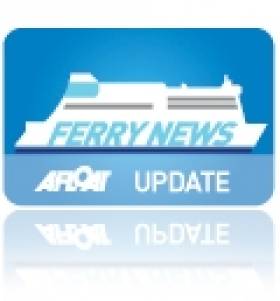Displaying items by tag: ManxUK ferry
Liverpool-Isle of Man Fast-Ferry Set to Spring Into Action
#MerseyFastFerry – The recent return of the Manx-Merseyside fast-craft car-ferry, Manannan alongside to Liverpool Landing stage marks preparations to the 2014 seasonal service between the city and Douglas, writes Jehan Ashmore.
Operated by the Isle of Man Steam Packet Company, Manannan, which had spent a winter lay-up in Liverpool docks, is to reopen the route this Friday (28 March). The inaugural sailing departs Douglas at 07.30 and for further information sailings and other routes visit the link HERE.
A UK-Manx service was in operation during the winter months on the Douglas-Birkenhead link. The ferry terminal of Twelve Quays in Birkenhead is located facing Liverpool on the opposite side of the River Mersey.
The Birkenhead-Douglas route had been served by conventional ro-pax ferry, Ben-My-Chree which in tandem also ran sailings to Heysham, from where the vessel continues to operate on the company's second Isle of Man-England route.





























































